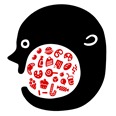Our Personal Environment I: We Are What We Eat
 As Dr. Molly Gray told Congress in February 2010, she was shocked to learn the extent of the toxic chemical burden she had accumulated, even though she was a careful consumer, eating primarily organic foods and using household products that were tagged as chemically safe. But like most of us over the last 50 years, it turned out that she had, in effect, been inadvertently poisoning herself. Her mercury levels, in particular, were exceptionally high.
As Dr. Molly Gray told Congress in February 2010, she was shocked to learn the extent of the toxic chemical burden she had accumulated, even though she was a careful consumer, eating primarily organic foods and using household products that were tagged as chemically safe. But like most of us over the last 50 years, it turned out that she had, in effect, been inadvertently poisoning herself. Her mercury levels, in particular, were exceptionally high.
Even if our diet is not focused on Twinkies, fries and Coke, most of us still eat food that is laced with environmental contaminants, hormone-disrupting chemicals, pesticides, herbicides, flavor enhancers, sweeteners, fats and salts, many of which don’t appear on any labels. Gradually we are learning that this intake is probably in great part responsible for the rising incidence of many cancers, heart disease and such developmental disorders as autism – among other illnesses.
We know what kind of food is good for us. Good for us is fresh and has been grown not too far away in soil with organic fertilizers. After harvesting, it has not been chemically treated in any way. If it’s from an animal, it hasn’t been fed or injected with any chemicals or drugs and has been allowed to swim or walk or waddle in an open, chemical-free habitat. And it’s not canned or packaged with chemical preservatives, although some packaging is, of course, required to get most foods on the shelf.
But what’s good for us isn’t cheap, there’s not a lot of it, and most of the world doesn’t get to eat it. A mother making close to minimum wage can’t afford to pay several dollars a pound for vegetables for her children. Most of the world has to eat what can be mass-produced, which requires fertilizers and other chemicals. It has to be delivered to a mass-market, which requires a lot of plastic and (sometimes toxic) chemicals to keep it from spoiling. Many of us who can afford better still buy foods that are processed, or sprayed, or include additives whose effects, especially in combination, are unknown. And almost everything we eat is affected by some form of plastic.
Just One Word: Plastics
In a famous scene from the 1967 film, “The Graduate,” a family friend, a businessman, says to Dustin Hoffman, “I want to say one word to you. Just one word. Plastics.” At the time, we had no idea what that would mean, environmentally speaking.
 Today, plastics not only wrap and contain much of our food, the chemicals that make them and a host of other chemical compounds permeate much of what we eat, even though most of the time we cannot taste or smell them. They enter our food as they are released over time, from the plastic containers they come in or the ones we use when we microwave; as chemically contaminated water is taken up by food as it is growing; as water and other drinks pick them up from the bottles in which they’re sold; when baby formula picks them up from supposedly safe baby bottles warmed by trusting parents; as the chemicals that line our canned food slowly release their bonds over time and mix with the contents.
Today, plastics not only wrap and contain much of our food, the chemicals that make them and a host of other chemical compounds permeate much of what we eat, even though most of the time we cannot taste or smell them. They enter our food as they are released over time, from the plastic containers they come in or the ones we use when we microwave; as chemically contaminated water is taken up by food as it is growing; as water and other drinks pick them up from the bottles in which they’re sold; when baby formula picks them up from supposedly safe baby bottles warmed by trusting parents; as the chemicals that line our canned food slowly release their bonds over time and mix with the contents.
There is some debate that many of the diseases that appear to be on the increase are just better diagnosed, but it’s hard to believe that anyone who has seen a friend or relative die from cancer was looking at someone whose doctor didn’t know what they had. In 2003, the World Health Organization reported that world cancer rates are expected to increase by 50 per cent by 2020. The incidence of autism in the U.S. has gone from one child in 10,000 in the 1970’s to an alarming one in 90 in 2007. Something besides better diagnosis is at work.
Corn-Fed Obesity
 Many of the chronic diseases that are becoming endemic are also associated with obesity. While obesity is unquestionably a matter of calories, there is a lot of debate about what makes people consume more than their body needs. One of the controversies has focused on the intensive use of high fructose corn syrup (HFCS) in a large percentage of the processed foods and bottled drinks that constitute a large part of the national diet. HFCS is not only the dominant sweetener in bottled drinks, cookies, cakes and ice cream, but also sweetens commercial salad dressings, chips, stuffings and sauces – food in which sugar is not an expected ingredient.
Many of the chronic diseases that are becoming endemic are also associated with obesity. While obesity is unquestionably a matter of calories, there is a lot of debate about what makes people consume more than their body needs. One of the controversies has focused on the intensive use of high fructose corn syrup (HFCS) in a large percentage of the processed foods and bottled drinks that constitute a large part of the national diet. HFCS is not only the dominant sweetener in bottled drinks, cookies, cakes and ice cream, but also sweetens commercial salad dressings, chips, stuffings and sauces – food in which sugar is not an expected ingredient.
Some studies have found that the highly refined corn syrup is less likely to trigger feelings of satiety than plain sugar, and therefore contributes to the consumption of more calories than the body requires. However, the jury is still out on the issue of whether HFCS or just any old sugar is to blame for the fattening of the national flesh. But what is clear is that the “sugarizing” of the national diet is a major contributor to the collapse of American health and its economic and lifestyle consequences. In 1970, when HFCS was first introduced into the American diet, 15 per cent of Americans were considered obese; today, one-third of us are. Some four per cent of our children were obese; today, over 15 per cent are.
But obesity doesn’t seem to be the only problem with HFCS. In January 2009, the Washington Post reported on two reputable American studies in which almost half the samples of high fructose corn syrup studied contained unacceptably high levels of mercury. It turns out that the highly industrialized process that turns corn into HFCS involves hydrochloric acid and caustic soda introduced by means of a mercury-based technology. While many of the more modern plants no longer use mercury, they did in the past, and many of the older HFCS-producers still do. That’s most probably where Molly Gray got some of her mercury.
We are, inexorably, what we eat, and it seems we eat too much, with too many added chemicals. To improve our future, we will have to change our habits, but if everybody is going to benefit, good food also must be affordable. The future looks bleak in that respect. Take rice, for example: from the ‘80’s until about 2005, the price of a hectare (about 2-1/2 acres) of rice cost $200. Since then the price of rice has been as high as $1000/hectare, and is currently running about $600/hectare – prices that have been influenced by the fact that feed stocks are being used to make ethanol, exploding demand for them. The world has a terrible problem to solve: continue feeding the world an unhealthy diet laced with toxins, or face starvation. Another alternative has to be found.
What You Can Do Now
Here are a few things that can make a big difference – over time. While it is true that the amount of exposure each time you are exposed may be incredibly minimal, the problem is that many of your small exposures are cumulative, and some chemicals – we don’t know which, yet – seem likely to become toxic in combination. Over a year, your efforts to minimize you exposure can yield a major reduction in your toxin intake. The list is by no means complete, but it’s a good start.
- Avoid all canned foods, as virtually all the cans are lined with BPS (Bisphenol A) which appears to have a host of dramatic negative effects.
- Avoid drinks in plastic bottles, especially if you keep them over time or if they are exposed to the sun or other heat sources for any time. Unless they are labeled BPA-free, BPA is also a component of almost all plastic bottles made with polyphenol, so try not to use any bottles with the recycling number 7 on the bottom.
- Never microwave anything in plastic, even if it says the container can be microwaved. The container may not melt, but it can still leach some of its chemicals into the food. Use glass or ceramic bowls or plates. Don’t use any kind of plastic wrap or plastic bags in a microwave. Even if the wrap doesn’t touch the food, the steam from the food collects on the plastic and drips back on the food, potentially carrying toxins with it.
- Don’t store anything fatty, like chicken, cheese or butter in any kind of plastic, as the fats apparently combine more quickly with BPA and phthalates than non-fat substances.
- If you can’t – like most of us – deal with the prices of organic meat and produce, try to eat food at home or in a restaurant that is made from fresh vegetables and freshly cooked meats. If you buy prepared food, try to get it from places that prepare their food from scratch every day, not from groceries, where it may have sat in warehouses and on shelves, leaching chemicals.
- Avoid any kind of food with additives and preservatives, which includes virtually all packaged foods. While most additives are non-toxic, most packaged meals contain a substantial amount of high fructose corn syrup sweetener and are high in salt. A large number of them also include food coloring, which is suspected of contributing to hyperactivity in children.
At this time there’s no way for any of us to control the contamination of food by chemicals and bacteria in the soil or water the animal, fruit or vegetable comes from, or in the factory where it’s processed. That’s why ‘eating local’ can give you a healthy edge. Not only is the food more likely to be fresher, local farmers are less likely than factory farms to have an ethic of cleanliness and more likely to have pride in their products. But there are, currently, almost no guarantees.


